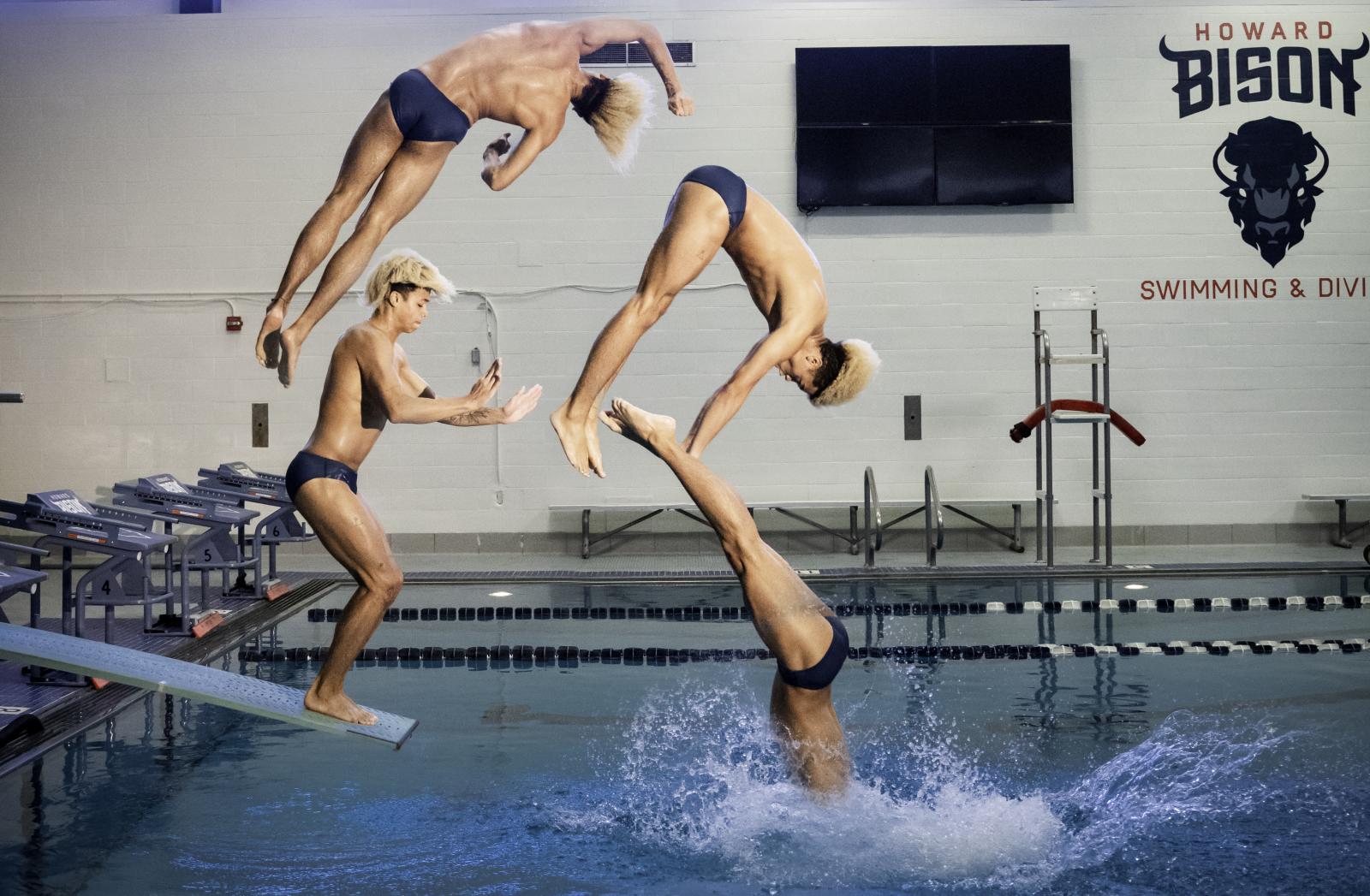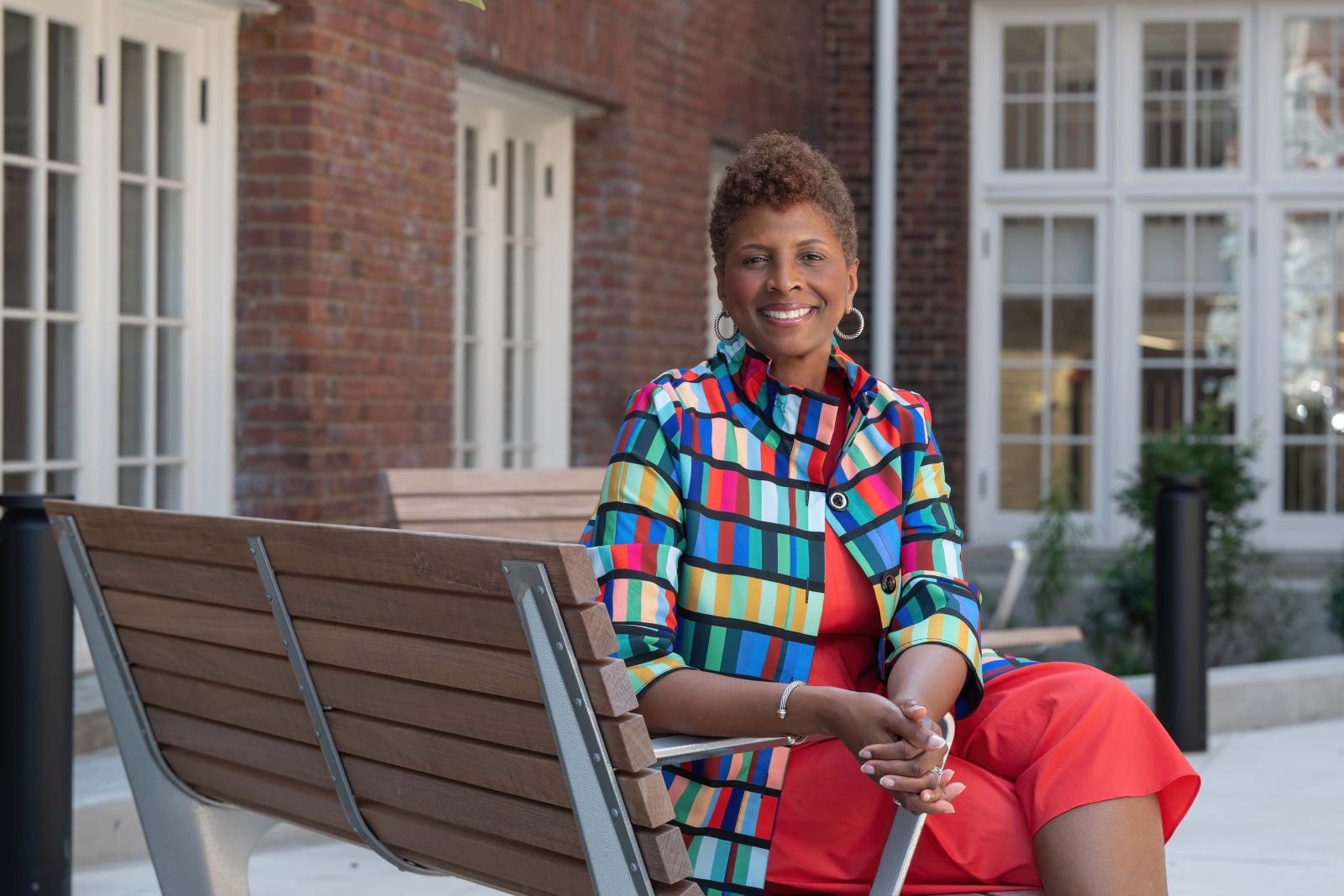It’s early afternoon during the first days of the fall semester, and despite the madness that tends to accompany a new academic season (or perhaps because of it), Howard University Graduate School Dean Dana A. Williams (M.A. ’95, Ph.D. ’98) has the measured calm of someone juggling several plates while expertly detecting the one still threatening to wobble.
“I’m good, still a little stressed,” she said, detailing a to-do list that until just before our conversation included securing a student’s trip to an upcoming conference. “If a student is scheduled to travel on Monday and it’s not done, I’m panicking.” The instinct is equal parts policy and pastoral care: Once a student loops her in, something needs to happen.
That duty-of-care is likewise the quiet engine behind “Toni at Random,” Williams’ new book on the decade-plus Howard alumna and literary legend Toni Morrison spent inside the publishing titan Random House. Before Morrison won Nobel and Pulitzer prizes of her own, she was in the trenches assisting others: shepherding manuscripts, mentoring writers, and recalibrating a publisher’s (and public’s) sense of who counts in literature.
Fittingly, Williams’ idea for a project on Morrison’s editorial career was sparked on Howard’s grounds. While a graduate student, she asked what she thought to be an innocuous question to her professor and the former head of Howard’s English and humanities departments, Dr. Eleanor Traylor, on if a throughline existed among the writers they were studying.
“These are the writers that Toni Morrison edited,” Traylor informed Williams, a revelation that would reframe her scholarship.
“I began to really pursue this notion of a Black woman editor bringing into print all of these writers who might not have otherwise been provided that opportunity,” Williams said.
Williams began to formally pursue the project in the mid-2000s, and her relationship with Morrison braided formal interviews and impromptu encounters across years.
“By the time I began to interact with her as a scholar, we did formal interviews at her office at Princeton,” Williams recalled. “There were also informal times, three different conferences where I presented on her editorship, and she intentionally came.”
Famed activist (and Morrison “editee”) Angela Davis accompanied Morrison to a Williams presentation in Paris, France. Another encounter on Howard’s campus — after Williams’ crate-digging unearthed the former Chloe Wofford’s theatre days as a member of the Howard Players — persuaded Morrison further that Williams was, if nothing else, a dogged and thorough researcher.
Those Howard years became some of Williams’s signature archival finds. “I’m going through [professor and Howard Players director] James Butcher’s scrapbooks, pulling pictures, plays, playbills” Williams said — some ephemera even Morrison hadn’t seen in ages.
“I’m glad you’re looking at the Howard Players stuff, because that was the most influential,” Morrison told Williams. “People talk about me as an English major, but it’s really my time on the stage at Howard that made a difference.”
“Who are you?” Williams remembered Morrison asking her, delighted at her discoveries. “It was one of those [moments] that I think made her say, ‘I’m going to help in any way that I can.’”
If the Howard Players research forced Williams to rethink Morrison’s biography, then Morrison’s private letters shifted Williams’ perspective entirely.
“Her correspondence is so revealing of her personality,” Williams said. “She could be sharp, cynical, formal — all in the same letter.”
These letters, dating back as far as the late 1960s, explode the myth of Morrison “becoming” Morrison to Williams; she instead found a realized editorial mind already at work. For instance, as the original film adaptation of “Charlie and the Chocolate Factory” headed to theaters amidst NAACP protests that certain character depictions were racist, Morrison wrote a four-page letter to a colleague enumerating (“from A to F,” as Williams put it) the myriad ways she agreed, an audacious missive that could have proven detrimental to her still fledgling career.
“This lady just came here fully formed,” Williams observed. “It’s really revealing about how multifaceted she was, and how confident she was, even before she became a writer.”
Williams sees a commonality throughout Morrison’s editorship: an intense contempt for mainstream writing customs, and an equally fierce commitment to narratorial interiority. In other words, “Tell the story that only you can tell, the one that wouldn’t exist if you didn’t tell it.” Morrison’s interest, Williams argues, wasn’t in books that perform Blackness for an external gaze, but in narratives that disregarded whiteness altogether.
“She was attracted to writers who were dealing with the interiority — like what makes this character move, what motivates this character, what is the reflection this character has, how does this character experience growth?” Williams said. “Very often, they were books where there were no white people in the fiction. This was like an internal conversation. Because the interiority of a character was what she was interested in with regard to her own writing.”
Morrison’s agreeance to assisting Williams in her research did not always guarantee that she’d be agreeable, however. Williams remembered that she could be both giving and impatient; loquacious on some visits and brusque during others. For Williams, the best experiences with Morrison were derived, much like her Howard Players exhuming, from reminding Morrison of something that once brought her joy.
“There were [interactions] that were incredibly helpful and light, that she would give me more time than I had scheduled, that were exploratory, where it was like a back-and-forth,” Williams said. “There were times when she clearly wanted to be somewhere else. And I would try to figure out, what’s the best I can do?”
The best she could do for this book, per Morrison’s advice, was to widen her aperture and think about the “big picture,” advice she’s taken from their conversations and applied more broadly to her academia.
“I went into the project thinking that I wanted to focus just on the fiction she edited, because that’s what I was interested in,” Williams said. “[Morrison] kept pushing me to say that this is a bigger story than what you know. At one point, when I was frustrated that I wasn’t moving fast enough, I should have been really [acknowledging] what she said: that it’s a big story. I appreciated her assurance that all stories didn’t have to be told quickly — they needed to be told well.”
Much like Morrison the editor, Williams occupies a similar space as an administrator at Howard.
“As an administrative academic, you do the work of an editor, which is to forecast what matters, and what is going to matter to people two to three years from now,” she said. “You’ve got to be able to predict what’s needed and to make sure that you have what’s necessary to meet that moment.”
“I think the other [similarity] is the editor as a gatherer,” she added. “I think it’s especially true of the dean of the Graduate School, which is why I love this particular deanship. To bring the best faculty, put them in conversation with the best students, put them in conversation with the best research, and to see what happens when I put them all in the same room together. And that’s, I think, what an editor does as well.”
In celebration and promotion of the book’s release, Williams embarked on a national tour this summer that took her to New York City, D.C., and Montogomery, Alabama, before culminating in Atlanta — the stop she cites as her personal favorite of the circuit.
“Atlanta was phenomenal, because it was like all my worlds came together,” she said. “The student who introduced me is one of the co-owners with her parents of 44th and 3rd Booksellers; she was an English major, so full circle moment there. One of the English department’s biggest supporters, former trustee Reed Tuckson, brought a crowd. Grambling was there, Howard was there, [Alpha Kappa Alpha Sorority] was there. Other HBCUs like Spelman, Morehouse, Clark. That was easily the most fun.”
Nonetheless, she is clear about the importance of completing this particular project while at Howard University.
After one conference introduction rattled off Williams’s workload, a colleague told her, “You’re just like a 21st-century it girl.” Williams shrugged. “I just enjoy going to work every day.”
Article ID: 2446




